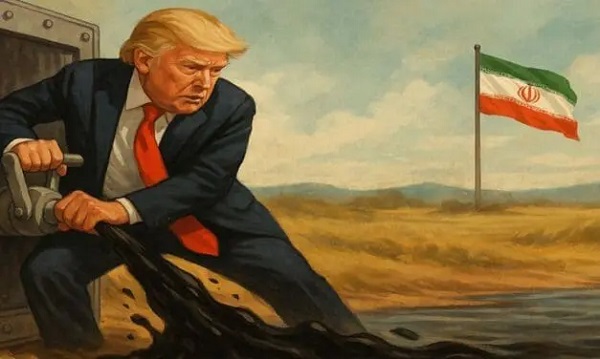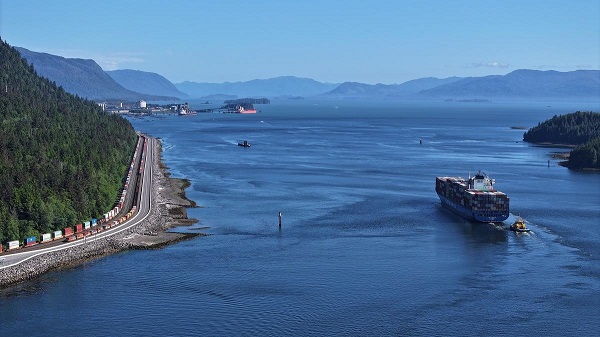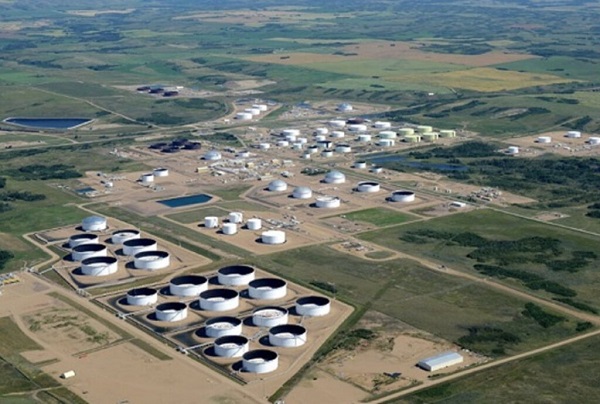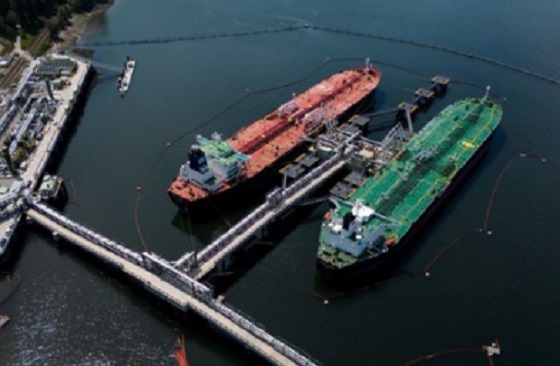Energy
Trump and Energy

From the Frontier Centre for Public Policy
By Terry Etam
Did you know that the United States Secret Service has a Chief of Communications? Does that not seem a little odd? To excel at his job, would he be perfectly silent?
Well, he’s not…Over the weekend the Chief of Communications of the United States Secret Service took to Twitter to start acting not very secret at all. How is this for a tweet: “…three charter flights filed with @SecretService agents, technicians, officers & mission support personnel safely arrived in Milwaukee.” He included a picture of one of the planes and all the debarked people standing on the tarmac.
I guess my definition of “Secret Service” is not that of the government’s, but then again, I’m not caught up in the same civil war-esque brouhaha over just what sort of curtain of madness would have descended over the world if Trump hadn’t turned his head that instant. Indeed, the past few days have been astonishing, watching players from across the spectrum and around the world reorient to accommodate what has happened.
Things are so complex, tense, and volatile that even the secret service feels the need to point out what it is doing, in great detail (though I’m sure the Director is muzzled re: the juicy stuff). In this environment predictions seem unwise, but hey that issue has never stopped me before, so here goes with a few observations of relevance to the energy industry.
As a building block of discussion, it is now highly probable that Trump will win the upcoming election. That ridiculously iconic photo of his bloody self with fist raised in front of the US flag is creating new Trump supporters out of not-insignificant online commentators that have spent years bashing him. Even Trump’s vice-presidential nominee, J.D. Vance, once expressed dislike for the big goofball (yes, he is: Exhibit A would be his tweet of a photo-shopped Trump tower in a Greenland village with the plea: “I promise not to do this to Greenland!” Of course he was many other things as well, but who could forget that…).
On the energy front, we know where Trump stands – drill baby drill. He wants to unleash American energy to drive down prices for consumers and increase competitiveness for US business. One aspect that goes unnoticed in this general discussion though is that there are material differences in what this means to the oil business/market versus the natural gas business/market.
He will focus on oil first. It will be symbolically important at a minimum for Trump to lower gasoline prices; they are a flashpoint because of the incessant visibility, the constant updating to a fraction of a cent in huge neon font as one drives down the road. Lowering gasoline prices will not be as easy as many think; for example, opening federal lands to drilling activity will not have any influence on gasoline prices for a long time, if at all. Trump could lower some forms of taxes in a bid to lower prices, but the effect of that would not be huge.
His main goal would be to expand oil production in a bid to lower prices, but this is where things get complicated in the modern age. The US is now a net exporter of oil, some 1.6 million b/d in 2023, a reversal of the situation of prior years. Now, the US still imports significant quantities of oil because its refineries require certain grades in greater quantities than it produces, and exports the grades it cannot utilize (mostly light oil).
This dynamic will make it tough for the US to drive down global prices on its own (oil is very much priced on the global stage), no matter what Trump does in the short term. A drilling frenzy, even if he could orchestrate one, would simply result in more oil exports until the quantity was large enough that it made a new global impact. But at that point, OPEC would be involved and pulling whatever strings it wanted to get the price where it wanted.
So, under Trump we should expect a flurry of feel-good vibes for the oil sector, with more friendly legislation, rules, and land leasing opportunities, but the impact on oil production will take time to achieve any price reductions. All other potential levers to reduce gasoline prices will be on the table, including existing federal regulations that are negatively impacting any downstream activity.
Natural gas is going to be more interesting. It is the unsung hero of industry; a vital cog that is critical to many industries and real estate ventures, but one that gets scant attention until something weird happens, like a shortage.
Natural gas shortages have historically been short term phenomena related to extreme weather events, and the price mechanism fixed the problem in a big hurry. Gas drillers are very good at what they do.
What has made natural gas so beneficial tot he US economy over the last decade is the fact that producers have reliably glutted the market, giving the US (and Canada) the lowest sustained natural gas prices on the planet. The economic benefit of that is hard to overestimate, since cheap natural gas enables so many beneficial industrial processes and keeps power and heating bills reasonable for consumers.
But if all that LNG export capacity is built, and if all the proposed AI data centres are built as planned, there will be significant strain on North American producers to meet that surge in demand. New LNG capacity and expected data center demand could, by 2030, add 20-30 bcf/d of new demand, in a 100 bcf/d market. Adding those volumes will be an enormous challenge and will require higher prices to incentivize producers to make it happen.
But higher prices will be exactly what Trump does not want. So, one can safely assume he will be pushing hard on US producers to expand output and will make it much easier to build infrastructure. That will help, but it is going to be a tough balancing act to ensure production increases sufficiently while at the same time keeping the cost of the vital fuel low. Natural gas markets would most certainly benefit from the relative stability of oil prices, however that is much harder to do in a “just in time” market which natural gas essentially is.
And then on top of it all, despite the importance of energy prices and availability, all will be background noise compared to the circus that will accompany his second run at presidency. The world is becoming more bifurcated and the US’ position in it is changing. There are enough active wars to make any human sick, and the US has to balance where to be involved and where not, which is as far from simple as can be. Additionally, the world is tectonically drifting into the wealthy west, the golden billion, and the ‘rest of the world’, the 7 billion that aspire to live like the west does.
On top of that, the people that hate Trump really, really hate Trump. One reason the west is in such turmoil is because of the polarizing nature of not just Trump, but of the reaction to Trump.
We will see though – at time of writing, Trump, in a post-shooting interview, said that he had ripped up his planned speech for the Republican National Convention. It was going to be a “humdinger” (his word, or course) attacking Biden’s record. However, his latest version will focus on unifying the nation. Let’s hope it works, rooting for you my American friends. No one will be better off if the US does not regain its footing.
Terry Etam is a columnist with the BOE Report, a leading energy industry newsletter based in Calgary. He is the author of The End of Fossil Fuel Insanity. You can watch his Policy on the Frontier session from May 5, 2022 here.
Economy
Trump opens door to Iranian oil exports

This article supplied by Troy Media.
U.S. President Donald Trump’s chaotic foreign policy is unravelling years of pressure on Iran and fuelling a surge of Iranian oil into global markets. His recent pivot to allow China to buy Iranian crude, despite previously trying to crush those exports, marks a sharp shift from strategic pressure to transactional diplomacy.
This unpredictability isn’t just confusing allies—it’s transforming global oil flows. One day, Trump vetoes an Israeli plan to assassinate Iran’s supreme leader, Ayatollah Khamenei. Days later, he calls for Iran’s unconditional surrender. After announcing a ceasefire between Iran, Israel and the United States, Trump praises both sides then lashes out at them the next day.
The biggest shock came when Trump posted on Truth Social that “China can now continue to purchase Oil from Iran. Hopefully, they will be purchasing plenty from the U.S., also.” The statement reversed the “maximum pressure” campaign he reinstated in February, which aimed to drive Iran’s oil exports to zero. The campaign reimposes sanctions on Tehran, threatening penalties on any country or company buying Iranian crude,
with the goal of crippling Iran’s economy and nuclear ambitions.
This wasn’t foreign policy—it was deal-making. Trump is brokering calm in the Middle East not for strategy, but to boost American oil sales to China. And in the process, he’s giving Iran room to move.
The effects of this shift in U.S. policy are already visible in trade data. Chinese imports of Iranian crude hit record levels in June. Ship-tracking firm Vortexa reported more than 1.8 million barrels per day imported between June 1 and 20. Kpler data, covering June 1 to 27, showed a 1.46 million bpd average, nearly 500,000 more than in May.
Much of the supply came from discounted May loadings destined for China’s independent refineries—the so-called “teapots”—stocking up ahead of peak summer demand. After hostilities broke out between Iran and Israel on June 12, Iran ramped up exports even further, increasing daily crude shipments by 44 per cent within a week.
Iran is under heavy U.S. sanctions, and its oil is typically sold at a discount, especially to China, the world’s largest oil importer. These discounted barrels undercut other exporters, including U.S. allies and global producers like Canada, reducing global prices and shifting power dynamics in the energy market.
All of this happened with full knowledge of the U.S. administration. Analysts now expect Iranian crude to continue flowing freely, as long as Trump sees strategic or economic value in it—though that position could reverse without warning.
Complicating matters is progress toward a U.S.-China trade deal. Commerce Secretary Howard Lutnick told reporters that an agreement reached in May has now been finalized. China later confirmed the understanding. Trump’s oil concession may be part of that broader détente, but it comes at the cost of any consistent pressure on Iran.
Meanwhile, despite Trump’s claims of obliterating Iran’s nuclear program, early reports suggest U.S. strikes merely delayed Tehran’s capabilities by a few months. The public posture of strength contrasts with a quieter reality: Iranian oil is once again flooding global markets.
With OPEC+ also boosting output monthly, there is no shortage of crude on the horizon. In fact, oversupply may once again define the market—and Trump’s erratic diplomacy is helping drive it.
For Canadian producers, especially in Alberta, the return of cheap Iranian oil can mean downward pressure on global prices and stiffer competition in key markets. And with global energy supply increasingly shaped by impulsive political decisions, Canada’s energy sector remains vulnerable to forces far beyond its borders.
This is the new reality: unpredictability at the top is shaping the oil market more than any cartel or conflict. And for now, Iran is winning.
Toronto-based Rashid Husain Syed is a highly regarded analyst specializing in energy and politics, particularly in the Middle East. In addition to his contributions to local and international newspapers, Rashid frequently lends his expertise as a speaker at global conferences. Organizations such as the Department of Energy in Washington and the International Energy Agency in Paris have sought his insights on global energy matters.
Troy Media empowers Canadian community news outlets by providing independent, insightful analysis and commentary. Our mission is to support local media in helping Canadians stay informed and engaged by delivering reliable content that strengthens community connections and deepens understanding across the country.
Canadian Energy Centre
Alberta oil sands legacy tailings down 40 per cent since 2015

Wapisiw Lookout, reclaimed site of the oil sands industry’s first tailings pond, which started in 1967. The area was restored to a solid surface in 2010 and now functions as a 220-acre watershed. Photo courtesy Suncor Energy
From the Canadian Energy Centre
By CEC Research
Mines demonstrate significant strides through technological innovation
Tailings are a byproduct of mining operations around the world.
In Alberta’s oil sands, tailings are a fluid mixture of water, sand, silt, clay and residual bitumen generated during the extraction process.
Engineered basins or “tailings ponds” store the material and help oil sands mining projects recycle water, reducing the amount withdrawn from the Athabasca River.
In 2023, 79 per cent of the water used for oil sands mining was recycled, according to the latest data from the Alberta Energy Regulator (AER).
Decades of operations, rising production and federal regulations prohibiting the release of process-affected water have contributed to a significant accumulation of oil sands fluid tailings.
The Mining Association of Canada describes that:
“Like many other industrial processes, the oil sands mining process requires water.
However, while many other types of mines in Canada like copper, nickel, gold, iron ore and diamond mines are allowed to release water (effluent) to an aquatic environment provided that it meets stringent regulatory requirements, there are no such regulations for oil sands mines.
Instead, these mines have had to retain most of the water used in their processes, and significant amounts of accumulated precipitation, since the mines began operating.”
Despite this ongoing challenge, oil sands mining operators have made significant strides in reducing fluid tailings through technological innovation.
This is demonstrated by reductions in “legacy fluid tailings” since 2015.
Legacy Fluid Tailings vs. New Fluid Tailings
As part of implementing the Tailings Management Framework introduced in March 2015, the AER released Directive 085: Fluid Tailings Management for Oil Sands Mining Projects in July 2016.
Directive 085 introduced new criteria for the measurement and closure of “legacy fluid tailings” separate from those applied to “new fluid tailings.”
Legacy fluid tailings are defined as those deposited in storage before January 1, 2015, while new fluid tailings are those deposited in storage after January 1, 2015.
The new rules specified that new fluid tailings must be ready to reclaim ten years after the end of a mine’s life, while legacy fluid tailings must be ready to reclaim by the end of a mine’s life.
Total Oil Sands Legacy Fluid Tailings
Alberta’s oil sands mining sector decreased total legacy fluid tailings by approximately 40 per cent between 2015 and 2024, according to the latest company reporting to the AER.
Total legacy fluid tailings in 2024 were approximately 623 million cubic metres, down from about one billion cubic metres in 2015.
The reductions are led by the sector’s longest-running projects: Suncor Energy’s Base Mine (opened in 1967), Syncrude’s Mildred Lake Mine (opened in 1978), and Syncrude’s Aurora North Mine (opened in 2001). All are now operated by Suncor Energy.
The Horizon Mine, operated by Canadian Natural Resources (opened in 2009) also reports a significant reduction in legacy fluid tailings.
The Muskeg River Mine (opened in 2002) and Jackpine Mine (opened in 2010) had modest changes in legacy fluid tailings over the period. Both are now operated by Canadian Natural Resources.
Imperial Oil’s Kearl Mine (opened in 2013) and Suncor Energy’s Fort Hills Mine (opened in 2018) have no reported legacy fluid tailings.
Suncor Energy Base Mine
Between 2015 and 2024, Suncor Energy’s Base Mine reduced legacy fluid tailings by approximately 98 per cent, from 293 million cubic metres to 6 million cubic metres.
Syncrude Mildred Lake Mine
Between 2015 and 2024, Syncrude’s Mildred Lake Mine reduced legacy fluid tailings by approximately 15 per cent, from 457 million cubic metres to 389 million cubic metres.
Syncrude Aurora North Mine
Between 2015 and 2024, Syncrude’s Aurora North Mine reduced legacy fluid tailings by approximately 25 per cent, from 102 million cubic metres to 77 million cubic metres.
Canadian Natural Resources Horizon Mine
Between 2015 and 2024, Canadian Natural Resources’ Horizon Mine reduced legacy fluid tailings by approximately 36 per cent, from 66 million cubic metres to 42 million cubic metres.
Total Oil Sands Fluid Tailings
Reducing legacy fluid tailings has helped slow the overall growth of fluid tailings across the oil sands sector.
Without efforts to reduce legacy fluid tailings, the total oil sands fluid tailings footprint today would be approximately 1.6 billion cubic metres.
The current fluid tailings volume stands at approximately 1.2 billion cubic metres, up from roughly 1.1 billion in 2015.
The unaltered reproduction of this content is free of charge with attribution to the Canadian Energy Centre.
-

 Business2 days ago
Business2 days agoLatest shakedown attempt by Canada Post underscores need for privatization
-

 Business2 days ago
Business2 days agoWhy it’s time to repeal the oil tanker ban on B.C.’s north coast
-

 Aristotle Foundation2 days ago
Aristotle Foundation2 days agoHow Vimy Ridge Shaped Canada
-

 Alberta2 days ago
Alberta2 days agoPierre Poilievre – Per Capita, Hardisty, Alberta Is the Most Important Little Town In Canada
-

 Alberta1 day ago
Alberta1 day agoAlberta Provincial Police – New chief of Independent Agency Police Service
-

 Energy2 days ago
Energy2 days agoIf Canada Wants to be the World’s Energy Partner, We Need to Act Like It
-

 MxM News2 days ago
MxM News2 days agoUPenn strips Lia Thomas of women’s swimming titles after Title IX investigation
-

 International2 days ago
International2 days agoCBS settles with Trump over doctored 60 Minutes Harris interview













